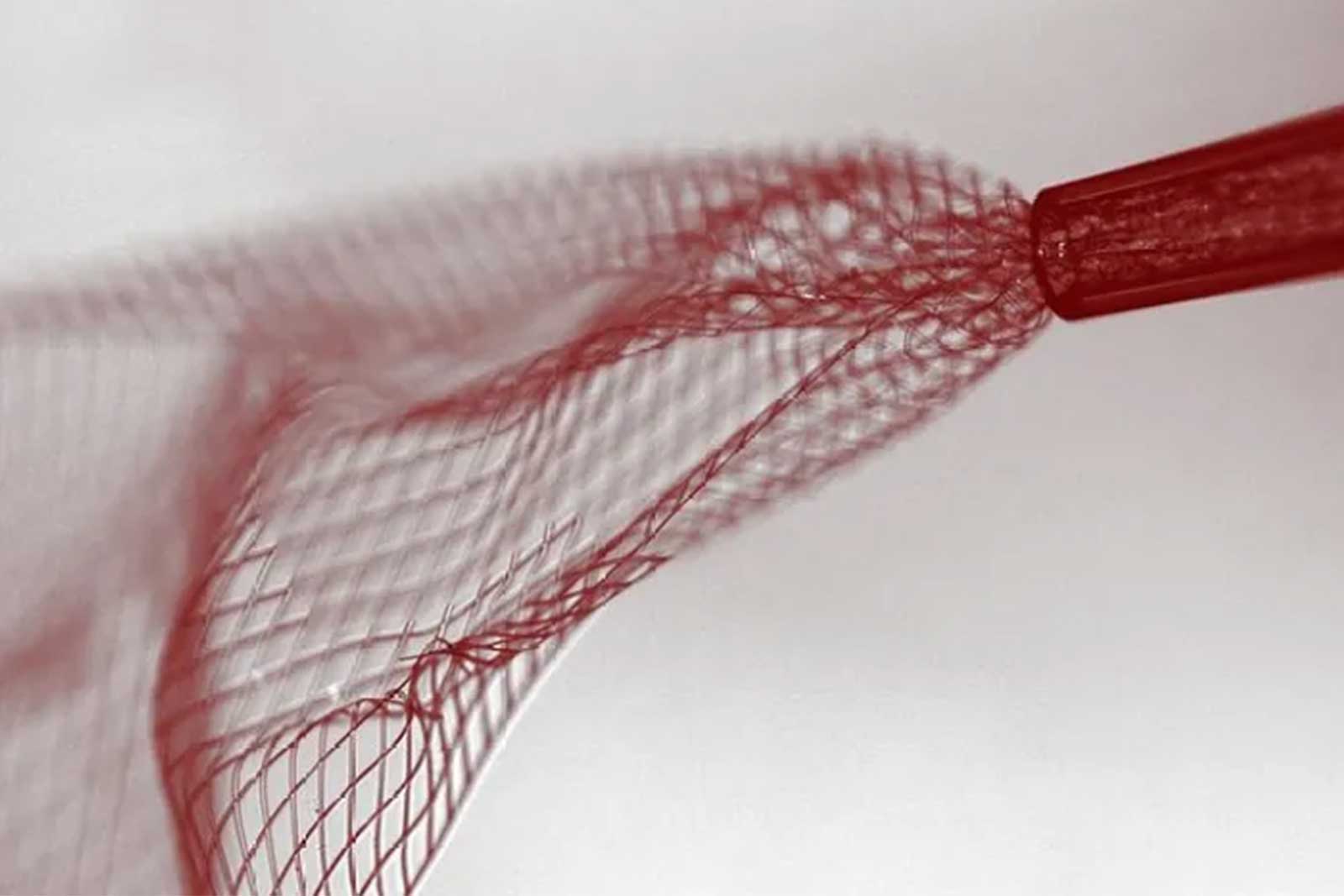The Quest for Injectable Brain Implants Has Begun
The hard electrodes inserted into the brain to treat Parkinson’s and paralysis damage the organ’s soft tissue. A new invention could change that.
OUR WORLD IS populated by hundreds of thousands of cyborgs. Some are Parkinson’s patients, who can shut off their tremors by activating metal electrodes implanted deep within their brains. Others—albeit far fewer—are completely paralyzed people who can move robotic limbs with their minds, thanks to their own implants. Such technologies can radically improve someone’s quality of life. But they have a major problem: Metal and the brain get along very, very poorly.
Brains have the texture of Jell-O—push on them too hard, and they’ll come apart into fragile clumps. There’s a violence to probing the brain with wires. “It’s like sticking a knife into the tissue,” says Magnus Berggren, professor of organic electronics at Linköping University in Sweden.
Worse, while electrodes remain relatively fixed in place, the brain jiggles and shifts around them, causing even more injury. The body responds by forming scar tissue, which gradually walls off the electrode from the neurons that it is supposed to record or stimulate. Because of scarring, Utah arrays—the tiny, hairbrush-like devices implanted in the brains of paralyzed people—are typically removed after around five years, and patients who have regained the ability to move or speak once again become silent and still.
Scientists have recognized the extensive damage that electrodes can cause since at least the 1950s. Generations of engineers have labored to solve the problem by crafting ever-smaller and ever-more-flexible devices, but these have their own shortcomings. There’s no good way to get a flexible electrode deep into the brain, and even when placed at the brain’s surface, such electrodes may not function well over long time periods.
But Berggren and his colleagues think they may have developed a solution. Rather than making an electrode outside of the brain and then trying to implant it, they have designed a gel that, when injected into bodily tissue, solidifies into an electrically conductive polymer. The process isn’t unlike pouring molten metal into a mold, except that the gel is apparently harmless, and the electrode, once it forms, is just as soft and movable as the brain tissue around it.
The team published their results in February in the journal Science. So far, they have tested the material in living zebra fish and dead leeches—in both cases, it formed electrodes that could successfully carry a current. And the electrodes seem safe: The zebra fish swam around happily after having the substance pumped into their heads, and when the scientists killed the fish and sliced up their brains, they didn’t see any scarring. Even neurons that ended up fully embedded within the electrodes appeared healthy.
Humans, though, are very different beasts, and Berggren knows from experience that what works in one organism doesn’t always work in another. For this project, he started by trying to use a molecule he’d already designed to form a conductive polymer in plants. But when he tried using the molecule in animals, nothing happened. “The first year of this project was a complete failure,” he says.
Eventually, Xenofon Strakosas, an assistant professor working in Berggren’s lab, figured out the problem: In plants, hydrogen peroxide helps the injected material bond together, but there isn’t enough peroxide in animals for the reaction to work. So Strakosas added some additional elements to the mix: an enzyme that uses glucose or lactate, which are common in animal tissues, to produce peroxide, and another enzyme that breaks down the peroxide. Suddenly, the electrodes formed perfectly.
For experts like Maria Asplund, a professor of bioelectronic microtechnology at Chalmers University of Technology in Sweden, the idea of forging electrodes inside the body is totally new. “Chemists can make things happen that I would never have imagined,” she says. But Asplund, who has spent over a decade working to create more brain-friendly electrodes, isn’t planning on abandoning her tried-and-tested methods for creating electrodes just yet. For one, this new tool hasn’t been tested in mammals—and no one knows how long it will last inside the body. Most important, though the electrodes might be able to successfully conduct electrical signals, Berggren and his colleagues don’t have a solution for getting those signals out of the brain so that scientists can actually see them, or for sending in current so the electrodes can be used for brain stimulation.
They have a number of options. One would be to stick an insulated wire directly into the electrode to carry its signals from deep within the brain to the surface of the skull, where scientists could measure them. That wire, though, could do damage to brain tissue, which is exactly what the team is trying to avoid. Instead, they may try to design other components that, like the electrode, could self-assemble within the brain, so that a signal could be wirelessly read from the outside.
If Berggren and his colleagues figure how to communicate with their electrodes, they will still struggle to compete with state-of-the-art devices like Neuropixels, which can record from hundreds of neurons at once. Achieving that degree of precision with a soft electrode could prove difficult, says Jacob Robinson, associate professor of electrical and computer engineering at Rice University in Texas. “There’s usually a trade-off between performance and invasiveness,” he says. “The engineering challenge is to push that envelope.”
At least to begin with, brain stimulation might be a better application for the soft electrodes, since it doesn’t require being quite so precise. And even imprecise recordings could benefit people who are fully paralyzed, says Aaron Batista, a professor of bioengineering at the University of Pittsburgh who researches brain-computer interfaces in monkeys. Soft electrodes might not be able to produce fluent speech by directly measuring someone’s brain signals—but for patients who can’t move at all, simply being able to convey “yes” or “no” would make an enormous difference.
Polymer electrodes aren’t just a safer, messier version of traditional electrodes, however. Because they form only in the presence of specific substances, they could be used to target parts of the brain with particular chemical profiles. Berggren and Strakosas plan to fine-tune their recipe so that the gel solidifies only in areas of the brain where there’s lots of lactate available—that is, areas that are extremely active. Using that strategy, they could specifically target the brain region where someone’s seizures originate. They’ll soon test that approach in epileptic mice. In principle, they could also create a material that uses not glucose nor lactate but some other substance to help the electrode form—a specific neurotransmitter, for example. That way, the electrodes would end up only in parts of the brain high in that specific neurotransmitter, which would allow neuroscientists to precisely target particular brain regions.
If Berggren and his team do manage to surmount the scientific obstacles ahead of them, their final task will be to navigate the thicket of regulations that govern devices that are used in medical settings. It’s impossible to anticipate how long that might take, especially for so novel a material. But Batista nonetheless thinks this discovery heralds a new era in electrode technology, no matter how far off it may be.
“I can’t be sure anybody living today will receive a flexible electronic neural implant,” he says. “But it seems likely now that someday somebody will.”

























